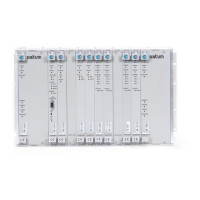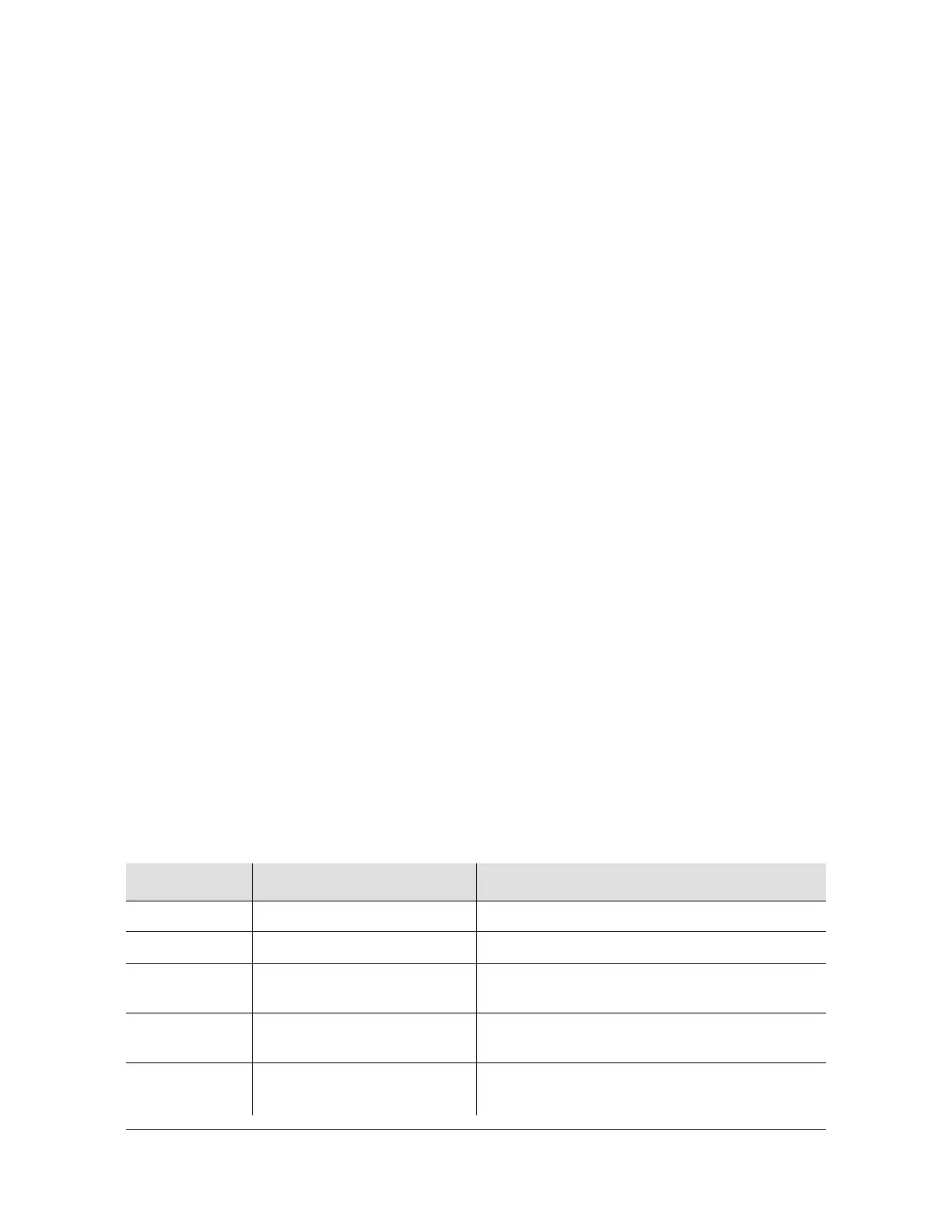Input Module Reference Data
1-Port and 3-Port DS1 Input Modules
156 SSU-2000 User’s Guide 12713020-002-2 Revision D – April 2004
TDEV Calculation
The Input module automatically (without user intervention) calculates TDEV (the
measurement of the frequency components in a series of phase readings) for all its
inputs and reports on the past 24 hours of TDEV history. TDEV is retrieved on hour
boundaries, though the stop time used may be current time.Reported time periods
include 0.05, 0.10, 0.30, 0.60, 1.0, 2.0, 3.0, 6.0, 10.0, 30.0, 60.0, 100.0, 300.0,
600.0, 1000.0, 3000.0, 6000.0, and 10,000.0 seconds.
The Input module also contains provisions for zeroing the phase readings for one
channel in response to a command from the Communications module. Once the
phase is zeroed, all subsequent phase measurements are expressed in terms of
how much they differ from the reading at the time the phase was zeroed. Zeroing
the phase invalidates all past phase averages, TDEV, and MTIE.
Synchronization Status Messages
The Input module reads and processes Synchronization Status Messages (in
accordance with specifications (ANSI) T1.403 for DS1 signals), to determine the
traceability of inputs. This traceability information is then used by the Clock modules
in selecting a reference signal and embedded into the system’s outputs. See
For a DS1 input signal, an SSM is considered valid only after seven of the last ten
received SSMs match. For DS1 signals, the Input module logs an alarm (user-set
level) if 10 seconds elapse and no SSM is detected.
SSM Selection Criteria
If the Input module is configured for provisioned mode, it will use the provisioned
SSM. If configured for automatic mode, the Input module uses the most recent valid
SSM. If a valid SSM is not received, the module uses the provisioned SSM. Refer to
Changing Factory Defaults, on page 100, for more information on SSM settings.
DS1 Input Module Alarm Modes
The Input module responds to various alarm conditions according to user-set alarm
levels. Each level is associated with a set of actions (or non-actions) as shown in
Table 7-5.
Table 7-5. DS1 Input Module Alarm Modes
Alarm Mode Action Alarm Elevation
IGNORE Do nothing Cannot be elevated to a higher severity level
REPORT Do nothing Cannot be elevated to a higher severity level
MINOR Generate event message Elevate to Major if the alarm condition persists
beyond the user-set elevation time limit
MAJOR Generate event message Elevate to Critical if the alarm condition persists
beyond the user-set elevation time limit
CRITICAL
Generate event message
Fault Port
Cannot be elevated as there is no higher
severity level

